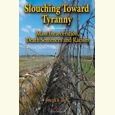The Italian Job
In Steve Hendricks’s new book, terrorism and spycraft make for nonfiction that reads like a le Carré novel
“A spy prefers to share only that which is to his benefit, no more, and much of what he shares will not be true,” cautions the journalist Steve Hendricks in an early chapter of A Kidnapping in Milan: The CIA on Trial. “This presents a conundrum for all who would understand espionage: Trust spies not at all, and one learns nothing. Trust them too much, and one might as well have learned nothing.” In researching his new nonfiction thriller, Hendricks, a freelance reporter living in Knoxville, appears to have trusted spies just the right amount, interviewing them on three continents over the course of two years. He clearly learned a great deal—not only about spies, but also about the terrorists they seek to catch by any means they deem necessary.
As the title suggests, the book revolves around a 2003 operation conducted by the Central Intelligence Agency in Milan to capture a radical imam named Abu Omar, who was suspected of aiding and recruiting terrorists, in order to ship him to Egypt for harsh interrogation. Omar and his associates had been watched by a web of Italian agencies and authorities long before the CIA made its move. (In one chilling Italian recording from the summer of 2001, two are heard discussing the 9/11 plot, although what they’re talking about would be clear only in hindsight.) In one of several deft historical asides, Hendricks describes the evolution of the CIA practice known informally as “Mexican extradition,” after a 1992 decision by the U.S. Supreme Court that supported the otherwise illegal kidnapping of a murderous drug lord in Mexico. Aided by secret presidential orders in 1985 and 1992, the practice eventually came to be known by the more delicate term of “rendition.” Following the 9/11 attacks, it became, with increasing frequency, “extraordinary rendition,” where agents would kidnap suspected terrorists not for trial in the U.S., but to transport them to friendly third-world nations for torture and, sometimes, execution.
 The CIA’s operation on Italian soil, against a suspect who had been the centerpiece of an ongoing local investigation, did not sit well with Italian authorities. A magistrate—a position Hendricks describes as a combination of prosecutor and chief investigator—named Stefano Dambruso was especially annoyed. If the first half of the book carries all the insider tradecraft and shifting alliances of a John le Carré spy novel, the second half of the book becomes a script for a pilot episode of “Law & Order: Milan,” with Dambruso in the Sam Waterston role, driven to curtail what he sees as American lawlessness in the service of torture. Ultimately, aided by uncharacteristically sloppy records left by various operatives, Dambruso’s investigation ties twenty-five Americans to the operation and prosecutes them in absentia.
The CIA’s operation on Italian soil, against a suspect who had been the centerpiece of an ongoing local investigation, did not sit well with Italian authorities. A magistrate—a position Hendricks describes as a combination of prosecutor and chief investigator—named Stefano Dambruso was especially annoyed. If the first half of the book carries all the insider tradecraft and shifting alliances of a John le Carré spy novel, the second half of the book becomes a script for a pilot episode of “Law & Order: Milan,” with Dambruso in the Sam Waterston role, driven to curtail what he sees as American lawlessness in the service of torture. Ultimately, aided by uncharacteristically sloppy records left by various operatives, Dambruso’s investigation ties twenty-five Americans to the operation and prosecutes them in absentia.
In speculating about why the CIA might have left such a trail of evidence of wrongdoing, Hendricks offers three possible explanations before concluding that a “fourth and still more satisfying theory was that the kidnappers believed they would not be caught or that, if caught, they would be immune. This theory too had a pedigree, one specific to Italy.” Hendricks reveals that the events culminating in the trial of the CIA grew not from the attacks of 2001, but from Cold War practices that led spies to supplant the role of police and prosecutors.
Much like le Carré, Hendricks builds his plot through a combination of biographies of multiple characters and cultural histories of multiple organizations—from many countries and with many conflicting goals—before allowing them to clash in carefully rendered scenes of intense action. In less confident hands, these biographical and historical accounts might grow tedious, but each page carries enough surprising fact and artful phrase to carry the reader forward. In describing how an Egyptian terrorist organization called Jihad grew during the stern rule of Hosni Mubarak, for example, Hendricks explains, “Men who came to prison relatively moderate Islamists became zealots. Zealots were won over to violence. Some of the violent came to support not just insurrection but terrorism. These last reasoned a government so barbaric could be defeated only with barbarity … . Mubarak had meant to pulverize the movement, but his maul had forged a stronger metal.” The facts Hendricks uses to support his exposition are well documented in chapter notes. Once the action begins to unfold, much of the dialog is translated directly from hidden microphones; much of the action was recorded by active surveillance.
 In one exchange between Omar and an unnamed Algerian, for example, the conversation turns to a colleague who is to perform some unstated task:
In one exchange between Omar and an unnamed Algerian, for example, the conversation turns to a colleague who is to perform some unstated task:
“And how does he go?” Abu Omar said.
“By sea.”
“When?”
“Not yet. He needs to study the thing well, because he has been booked. They have taken his fingerprints.”
“That’s bad.”
“He has decided to change his documents—that’s the plan. Give me a pen.”
There was a shuffling noise, then silence as if the man were writing. At length he said, “The brother already sent the photos and a catalogue.” A “catalogue” was often code for a passport or other documents.
The level of detail and realistic action is heightened by the ample surveillance records, most of which might never have come to light but for the trial, in a manner that recalls the gripping scenes of Mark Bowden’s Black Hawk Down, built from the transcripts of Army radio chatter. In places where witness accounts diverge or sources may be lying, Hendricks presents multiple possibilities in a manner that contributes to the overall feel of a complex spy novel.
“The barbarisms of America’s ‘War on Terror’ appalled me, as did reporters who went along with the barbarisms,” Hendricks writes on his web page. “I was particularly taken aback by the Bush (and now Obama) claims that torture-by-proxy makes us stronger. I wrote A Kidnapping in Milan because few reporters have shown what torture really looked like, because the Italian magistrate who was prosecuting the CIA kidnappers was a charismatic figure, and because I wanted to see if he would succeed in his struggle against American lawlessness.” Ultimately, Hendricks examines all of these things with a keen eye. His reporting is so realistic that the reader is left uneasy, for none of the characters portrayed—whether terrorist or spy, policeman or torturer—is entirely evil, and none of them, not one, emerges from the story innocent.


